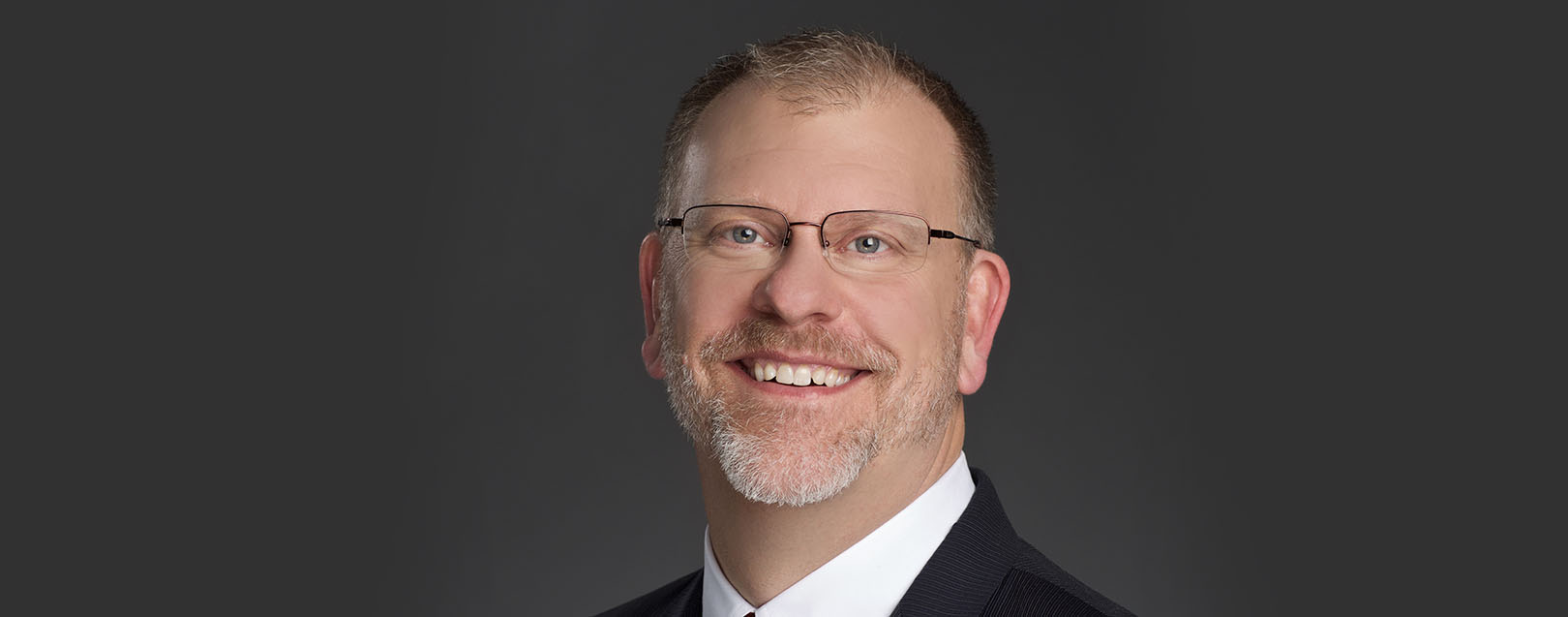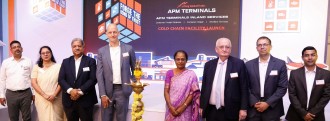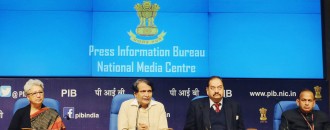
India's Smart Grid framework is the best!
Deepak Kumar | The Dollar Business
Innovari – is a US-based Interactive Energy Platform provider for Smart Grid solution that connects utilities with their customers and communities to improve how the world uses energy. The platform resolves the electric grid’s core problem, the load duration curve, unlocking access to affordable capacity that enhances system reliability, utilisation, and financial performance.
With deep grid situational awareness, Innovari enables dynamic, two-way verifiable demand side management, grid system optimisation; renewable and distributed energy resources integration to companies and consumers across the world. The company, since its foray into the Indian energy industry seven years ago, has been able to forge collaborations with major electrical supply companies of India, which have, in turn, led to Innovari’s considerable growth in the market.
The Dollar Business (TDB) catches up with Chris Hickman (CH), CEO & President of Innovari to find out what had driven the company’s colossal growth across the world, especially in India, and what was his next strategy to conquer the Indian energy market.
TDB: You have been in India for seven years. How has the experience been?
CH: It has actually been great. I have learnt so much. For the first couple of years, I was doing the traditional American thing; focusing on how it should be done vs listening, and over time having the opportunity to spend time with people like the Indian Secretary of Energy. They were very gracious with their time and taught me that we need to listen and understand the Indian context to be successful. It was a great learning experience for me personally and for all the businesses we are doing around the world. But, most importantly it really allowed us to craft a solution for our businesses in India in a very unique way.
TDB: What differences do you see in the Indian market and the American market?
CH: In America and Europe, the power grid is all built. We have excess capacity, and we have flat or very small growth. Here, close to 200 million people are without electricity, a dramatic growth opportunity. And in the power industry as you grow, you get opportunities to do things differently. Here, we have the opportunity to make the changes that we can’t in America and Europe for the next 20 years, because they are not growing.
TDB: What’s your expansion plan in India?
CH: We are really excited about our plans. We are soon going to be announcing several hundred megawatts of projects. At the India Smart Grid Forum (ISGF), we are going to be announcing some deployment partnership with the Indian companies, because most of what we do stays in India. We don’t bring resources to India; we hire local engineers and local staff. We currently have four offices in India, and we will probably have as many as nine in the next 6-9 months. This is an interesting time for us as well as for the Indian companies we are going to be partnering with. It is going to be cheap for us to both manufacture and deploy in the rest of the Asia-Pacific rim.
TDB: Which Indian companies are you partnering with?
CH: Predominantly, we like to deal with private utilities, but we recently partnered with BESCOM (Bangalore Electricity supply company Ltd.) on the government side. Reliance was our initial customer in India. They did the pilot project with the support provided by the US government. And then we did some work in Calcutta. We are one of the major demonstration partners with Tata Smart Grid Lab - we actually have the opening dashboard for the whole facility. The rest of them are confidential for the moment, but we have nine other utilities that are currently interacting around India.
TDB: Are you being given adequate support from the government? What policies act as a hindrance in your work?
CH: We have been in 53 countries in the last five years, and we have seen policies from probably a hundred. India has the best Smart Grid framework than any other country, including the USA and Europe. It was very well thought out; they learnt looking at others around the world making sure they were not repeating the mistakes. What I think is missing here in India is the mission. A country can be successful in developing state-of-the-art transportation systems, or good water system or any of these facilities, but none of these things would work without electricity. One of the reasons that the US, just a 200-year-old nation with no history, became a superpower because Teddy Roosevelt said, “we are going to electrify this nation.” There is only one industry that drives the success of a country; that is electrification. I think that Prime Minister Narendra Modi-led government has put that out clearly that they want to electrify the whole country. So, I think what is missing here is the outcry that says we need 24 x 7 power in every nook and corner of the country, so that we can have health and welfare schemes running successfully. Electricity has to be there or nothing else works.
TDB: What has been your experience operating under the previous government and the NDA-led government?
CH: We have seen quite a bit of change. It is easier for people like me, those who visit India intermittently, than those who live here. In the last seven years, we have seen things getting cleaner, corruption decreasing- everybody knows it is still there at some level but the understanding that actually makes the whole thing more expensive and harder to get things done - seems to be declining. There is a lot of common vision now with a workable framework. Where seven years ago, there was no framework - even though the Electricity Act of 2003 was passed - there was no mission, there was no guidance and there was no central process. Now it is there. There is a very-aligned vision and there is a well-documented plan. We are now seeing action and less talk. We are seeing people taking action to make the projects work. Before 2014, there was all just talk. Now we are seeing things getting done. That is a pretty big shift.
TDB: The Indian government has initiated several programmes; where do you see the opportunity?
CH: There are many initiatives. But to me, opportunities are everywhere. We have more than 200 million people without electricity. Whether it’s a generation transmission distribution or smart networks, all of them are opportunities. The thing that we are focused on is creating a platform that actually engages the customers. Single value proposition is the key for us and where we think there is dramatic opportunity because of the concept of the virtual power plant, we can do that as reliably as actually burning fuel and running a generator. But, because we are new and unique in this space and as nobody has ever been able to do that before, we see those opportunities everywhere in the Indian market.
TDB: Have you created any roadmap to go ahead with your plan?
CH: We have. One of the major shifts we have seen are the challenges of the governmental utilities vs the private sector utilities. It’s true that most of our agreements are with those utilities, because they share regulators at the same stage. The government utilities are being exposed in a whole new way. When Reliance does something in Mumbai with its regulator Maharashtra Electricity Regulatory Commission (MERC), it has certain utilities that it regulates, so they are all there to see it happen. We have been very keen to see significant traction not only from the recognition, but also from the federal government and the state government about the need to finance all the projects.
TDB: What is the share of revenue that the company earns from the international and domestic markets?
CH: The international share is 80% and the domestic share is 20% in the US. Of the 80% international share, the share from India is around 18-20%. But by the same time next year, it will be probably half of our international portfolio. Right now, we have projects in nine countries across four continents. So, the international footprint is about 80% while the remaining 20% comes from our homeland, US. Our international footprint is growing exponentially. We are an altruistic company, and what we do matters to the world and to the people differently in the developed countries to what it does in the developed markets. We have made a conscious decision with our investors that we want to pursue markets where we could make a difference in the world.
TDB: Is 15-20% a respectable figure? Do you see opportunities in India?
CH: What people don’t understand about the utility industry is that we have very long-sell cycles. With the progress we have made now, our definition of business, and success stories, in India, showing that we can be successful here. It’s a long process; but once you get started the rest of the industry takes notice and you move much faster.
It’s a wonderful market. There are such great opportunities here in India, and I truly believe that India will leapfrog from the rest of the world in having the most optimized grid that the world has ever seen. Many people that I talk to are surprised and exclaim, “Are you kidding me?” But what we are seeing right now; the willingness to adopt and move forward, aiming for a higher growth and by embracing the demand side; these factors are going to create the most optimised grid in India in the next decade. And while there might still be challenges around India, I firmly believe this country will lead the way in showing the world how a next generation grid can be built!






 to success.
to success.